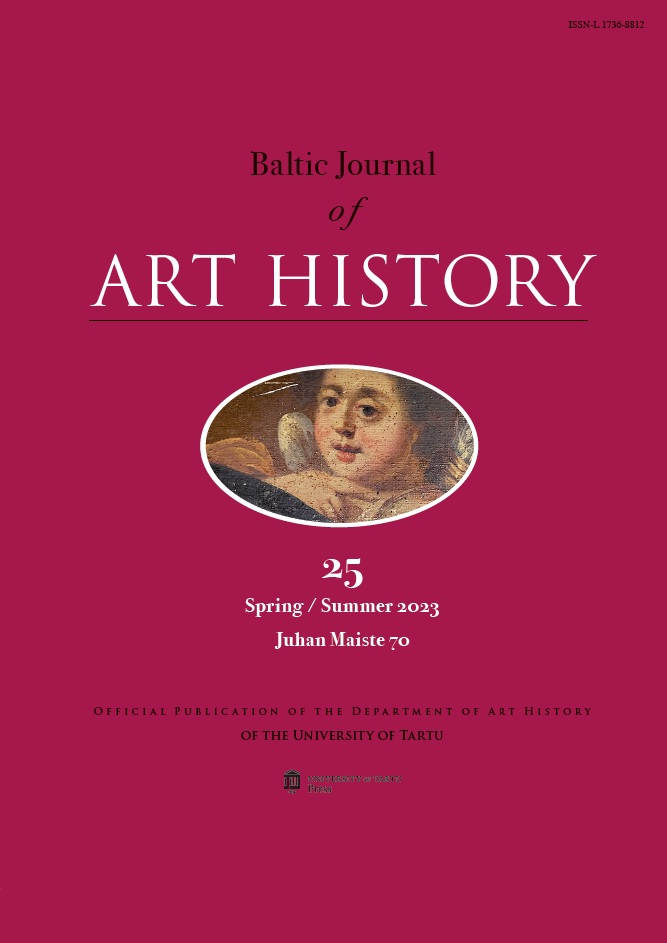THE WORLD OF VASTSELIINA ESTATE IN 1913
REINHOLD KARL VON LIPHARDT AS A PHOTOGRAPHER
DOI:
https://doi.org/10.12697/BJAH.2023.25.05Keywords:
Reinhold Karl von Liphardt, Vastseliina, history of photography, pictorial ethnography, Baltic German cultural heritageAbstract
The main subject of this article is a photo album created by Reinhold
Karl von Liphardt Jr, an outstanding representative of the Baltic
German landed gentry in Estonia in the first half of the 20th century.
In the early 1990s, the director of the “Bildarchiv Foto Marburg” of
the Art History Institute of the Phillips University Marburg, Mrs.
Brigitte Walbe made the duplicates of the photographic materials
from the collection of the Baltic German historian and genealogist
Georg von Krusenstjern available to the author of this article.
The article classifies and analyses the 181 photographs pasted
in the photo album which, with the highest degree of certainty,
can be attributed to Reinhold Karl von Liphardt Jr. (1864–1940), the
owner of Raadi, Vastseliina and several other estates. Judging by the
photographs in the album, it can be concluded that von Liphardt used
photography as a means of enriching his emotionally saturated life
with yet another means of artistic self-expression. The photographs
taken in the period from the winter of 1912–1913 to the winter of
1913–1914, convey an inordinate amount of visual information about
the landscape, architecture and society in the Vastseliina manor.
Reinhold Karl von Liphardt’s photo album presents a series of
chronologically consecutive images and it is similar to a poetic “diary
in pictures”. Reinhold Karl von Liphardt used photography as a
perfect means of documenting his ecocultural environment. His
landscape photographs are characterized by great attention to detail.
The cultural and sociological significance of the rural scenes in the
photographs is further increased by the presence of local people in
them. The Seto ethnic group lived in the estates of Reinhold Karl
von Liphardt and, thanks to their ethnographic uniqueness, drew
the attention of an educated landlord.
The photos with individual and group portraits of the
representatives of the Seto ethnic group are not only vivid evidence
of the Estonian culture in the first decades of the 20th century, but
also striking works of art, whose power of expression elevates them
considerably above the emotionality and artistic effect of Reinhold
Karl von Liphardt’s lyrical landscapes and idyllic family portraits.

